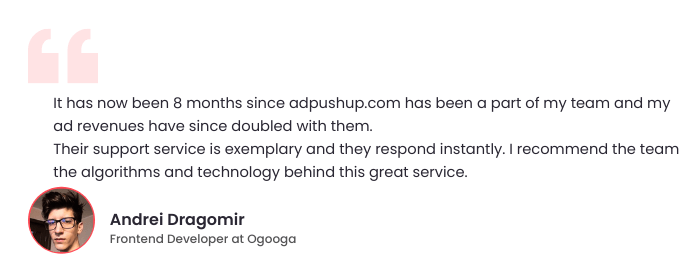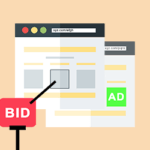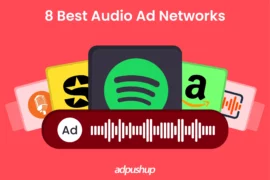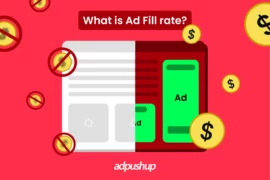More than 50% media buyers and sellers don’t understand auction dynamics, this post explains first-price auctions, second-price auctions, and how they work.
Last year, The Drum released a report on auction systems in collaboration with The Rubicon Project. The survey included 176 publishers or mobile app developers (45% sellers), and 204 DSPs, agencies and trading desks (53% buyers).
One of the most key findings from the survey were that nearly 50% of buyers and sellers don’t understand the differences between first and second price auctions. Considering that all programmatic and RTB transactions run using one or the other of these auction types—the lack of understanding about how they work is alarming.
The black box days of programmatic are over, however, in order to truly deliver on this promise of transparency it is incumbent on the tech providers to clearly and plainly articulate the fees and auction dynamics within which the buyers and sellers transact. Without being provided this level of awareness, buyers and sellers are greatly handicapped in their ability to make the most educated decisions with their inventory and spend.
— Joe Prusz, chief revenue officer at Rubicon Project
For web publishers, not understanding how first- and second-price auctions work means not having control over the sale of their own ad inventory. You can’t optimize your ad revenue if you don’t understand how the auction works and how bids are finalised.
Before we get into a detailed comparison between first-price and second-price auctions along with their pros and cons, let’s define them and understand some basic auction terms:
- First-price auction: In this model, the buyer pays the exact amount based on their winning bid. Because of this, buyers try to bid close to what the impression is actually worth to them. Generally speaking, this auction maximizes revenue for the seller.
- Second-price auction: In this model, the buyer pays $0.01 more than the second-highest bid made in the auction. It is in the buyer’s interest to bid the highest possible value that they can, to maximise their chances of winning the bid.
- Header bidding: A special class of first-price auction in which buyers can place competing bids on reserved inventory in real-time. This allows buyers to compete for premium inventory and helps publishers to maximise their ad revenue. (Read our post on header bidding technology.)
- Price floor: This is the minimum price that a publishers is willing to accept for their inventory. Setting the right price floor can help publishers protect their ad inventory from being undersold. Price floors can be fixed or adaptive based on how they have been configured.
- Clearing price: The final price that is paid for an impression.
Understanding Auction Types with Outcomes
You now have a rough idea about how first-price and second-price auctions work, let’s consider how they affect the clearing price with an example. Let’s say that three bidders (A, B, and C) take part in an auction and bid $2.4, $3.1, and $3.4 for an impression.
In the case of the first-price auction, the winning bid would be attributed to buyer C and the clearing price will be the same as the bid, i.e., $3.4. While the first-price auction can theoretically maximize revenue for publishers, it can create a price war between buyers who are trying to guess the correct value of the inventory and outdo each other. In the long run, it may actually result in lowered demand for publisher inventory as more and more buyers fail to get viable returns on their ad spends and pull out of the auction.
In a second-price auction, though the winning bid still belongs to buyer C, their clearing price will be $0.01 + second-highest bid ($3.1) = $3.11. The amount that the buyer saved on this impression, $0.29, is known as the reduction. The reduction is an opportunity for the buyer to save on the overestimation of the impression value. Due to price floor setting and other kinds of yield optimization techniques, however, a clean second-price auction is a rarity in the world of programmatic media buying.
Further complicating things, price floors can behave differently based on how they have been configured by the publisher using their supply-side platform (SSP). In the case of hard price floors, all bids made below a threshold are automatically discarded without further consideration. A soft price floor, by comparison, may consider and accept bids that fall only slightly below the threshold in trying to “catch” more number of bids overall.
Moving from Second-price to First-price Auctions
The fast adoption rates and popularity of header bidding among both buyers and publishers in recent years gives us a hint about the direction that real-time bidding is headed. There are a couple of reasons why the market is shifting in favour of first-price auctions.
-
First, the second-price auction may be hurting publishers, who have been forced to find ways of artificially inflating original CPMs. Setting price floors and adding fees to manipulate the final yield are some of the ways publishers have protected their margins. This goes against the idea of a second-price auction and in a way turns it into a quasi first-price auction.
-
Second, transparency has always been a challenge with ad tech, moving to first-price auction removes layers of ambiguity and makes the playing field level for everybody including buyers, publishers, networks, exchanges, DSPs, and SSPs. Not to mention the infrastructure costs that are saved both in technology and human resource by eliminating the optimization arms race.
-
Third, buyers get better results with first-price auctions. Header bidding allows SSPs to run second-price auctions before running the final auction in the publisher’s server. SSPs that hold a clean second-price auction will send less competitive bids for the final auction, lowering win rates. First-price auctions give buyers a higher chance of winning in header bidding.
Conclusion
Advertising is a zero sum game. The buyer’s reduction in second-price auction is lost revenue for the publishers. So it’s no surprise that publishers are trying to regain lost revenue. This is why SSPs and ad exchanges have been been implementing a combination of hard and soft price floors, in essence turning the auction into a hybrid of first-price and second-price auctions.
Of course, this isn’t good news for advertisers who are now left with the options of either going with first-price auctions or quasi first price-auctions. Simon Harris, head of programmatic activation for Dentsu Aegis network, has said that 1st price auctions are ripping off advertisers:
Whilst there are cases where first price auctions are helpful for buyers too, the general consensus in the industry is that these moves are not designed to help the buy side. So what’s driving these tests? As I mentioned above publisher demand for greater yield, but also a quest by Ad Exchanges to be more profitable. For Exchanges their fees are typically a percentage of the price paid, so increasing the cost a buyer pays for an impression boosts their profits. Whilst it’s maybe a touch cynical many believe it is no coincidence that the push towards a first price auction has happened at a time when ad exchanges are being pressured to reduce their “take rate”. If it is a coincidence, it is certainly a highly convenient one.
For the moment, what remains to be seen is if and how, with time, first-price auctions will also begin to get gamed in the way that second-price auctions have been. In the meantime, advertisers should get better acquainted with RTB mechanics to know how their money is being spent and partner with smart DSPs who will protect their interests.

FAQs
First-price auctions use different auction rules than second-price auctions. Ad exchanges accept simultaneous bids for ad inventory. During the auction, the highest bidder wins and pays the exact price per thousand ad impressions.
A winning bid is also known as a clearing price. Publishers tend to benefit more from first-price auctions than from second-price auctions. According to Digiday, 78% of publishers said the transition from second-price to first-price auction helped them maximize revenue.
Second-price auctions are a form of programmatic advertising in which the highest bidder wins, but only pays the second-highest bid plus one cent.
In programmatic advertising, the second-price auction model is widely used. Advertisers can bid high prices to secure impressions, but ultimately pay much less for them.

Shubham is a digital marketer with rich experience working in the advertisement technology industry. He has vast experience in the programmatic industry, driving business strategy and scaling functions including but not limited to growth and marketing, Operations, process optimization, and Sales.







